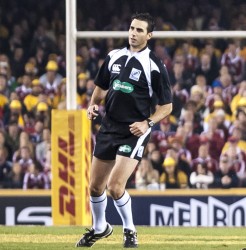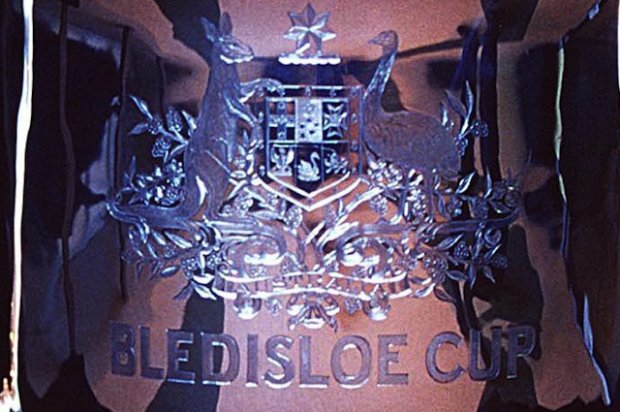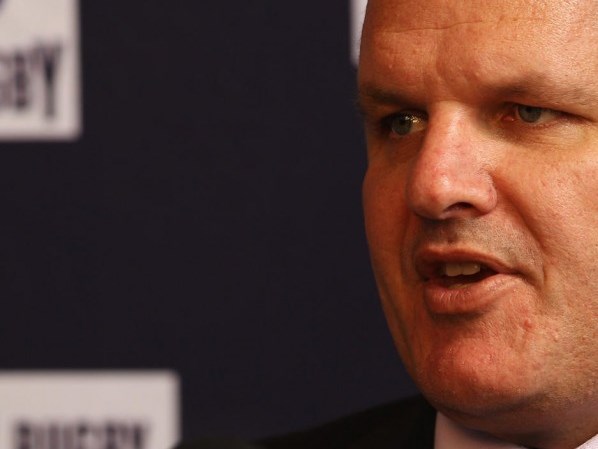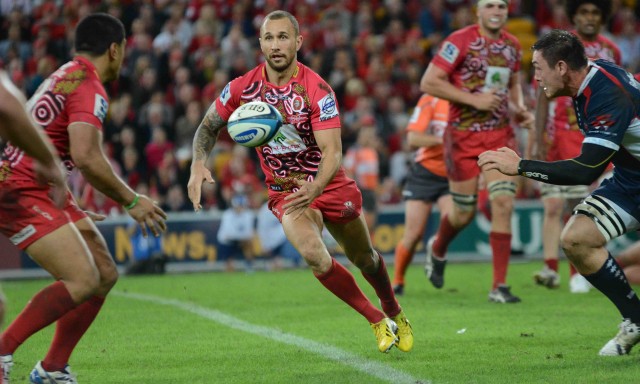Here’s the second part of my Seven Questions for the Bledisloe Cup. See the first instalment here.
4. What new tactics will we see from the Wallabies?
Though Ewen McKenzie says he has been developing a game plan for the All Blacks for months (if not years), the Wallabies will only have been in camp for two weeks prior to Bledisloe I. It is too much to expect a panoply of new moves. But some changes can be anticipated.
For one thing, I expect the Australian backline to really use their set-piece ball for a change. It must have been very frustrating for some of the backs to see Deans insist on low-gain plays from set-pieces, often involving a crash-ball by a centre, like Adam Ashley-Cooper.
The last Wallaby try from a set play that I can recall came in Hong Kong in 2010 (readers might remember others that elude me at the moment; feel free to post below). The Wallabies actually scored two that day, one a beauty utilising an overlap to allow Drew Mitchell to score in the corner, the other equally good but essentially accidental, with Ashley-Cooper beating his man in the line and then swerving around Israel Dagg to score under the posts.
In a similar vein, I expect that McKenzie will seek to utilise moves from stable set pieces, much as the Waratahs did this year to great effect. The Tahs even scored twice off the very same (and awesome) move (once against the Blues in Sydney, the other time against the Force in Perth).
The move isn’t overly complex (see below at 13:10). A lot seems to be happening, but at base it’s a simple loop by the halfback and then a case of running straight, committing defenders, and putting the ball through the hands. But the move was very effective and hard to stop.
http://www.youtube.com/watch?v=D7XMSRu9Mkg
I think we can also expect to see more variety in how the forwards are used to advance the ball. Deans’ Wallabies infrequently picked and drove, and rarely ran off the No. 10, but I expect we might see a bit of both.
I think McKenzie has backed himself into a bit of a corner with his “play the Australian way” comments. These all but ensure he has to deliver on these promises. The upside, for fans, is we can bank on a fair bit of play out wide, something resembling a return to the Wallabies of 2010 perhaps rather than the more stodgy vintage of 2012.
Finally, I think we might see the Wallabies maul. Not just “two-handed take into stationary set up”, but actual mauling. The Reds use of the expanded maul, with centres joining in, was one of the real tactical surprises of the season and it was very, very effective. If two backs get in early enough to put two full body widths between the lineout jumper and the ball carrier, rather than just one, the maul can be hard to stop legally. Moreover, proven success at the maul will hold opposition forwards thereafter and open up little gaps for Quade and co to exploit in the midfield.
5. If Quade Cooper starts, what defensive structure will Australia employ?
I brought this point up in my column on Quade Cooper last week and very few readers commented on it, instead questioning whether in fact Cooper was a defensive weak link in the first place. I think that in itself says a lot: this is a real question with no clear answers.
If Jesse Mogg is picked at fullback, does this mean Cooper will defend in the line? If so, how long will it be before the All Blacks send Julian Savea or Ma’a Nonu at him off a set-piece? Or will Australia’s entire defensive structure change depending on who is wearing the 10 jersey?
A lot will depend on who is picked at fullback, Mogg or Folau (who defended both there and on the wing for the Waratahs this year), and to a lesser extent who is picked on the wing and can drop back (specifically, whether they can kick a ball back, like James O’Connor, or whether they essentially cannot, like Cummins).
I suspect that there will be a lot of chopping and changing in who defends where depending on who is on the field for the Wallabies and where on the pitch the All Blacks have the ball. It might take more than one match to get it right.
6. Will the referees be awed by the All Blacks?
 Every year it seems there is some innovation seized upon by the All Blacks that the referees are slow to adapt to. In 2010, it was flankers leaving the scrum early on their own put-in to create an extra man, which led to the decisive (and notorious) try by Richie McCaw in Sydney that year.
Every year it seems there is some innovation seized upon by the All Blacks that the referees are slow to adapt to. In 2010, it was flankers leaving the scrum early on their own put-in to create an extra man, which led to the decisive (and notorious) try by Richie McCaw in Sydney that year.
In 2011, it was driving past the ball in the ruck, or tacklers allowing themselves to be driven past, and then standing up rather than rolling away, requiring another opposition forward to clean out the “lazy” rucker.A small innovation, but an important one in delaying the opposition’s ball and engaging one more would-be attacker.
In 2012, there were plenty of lazy tacklers not rolling away and doing just enough to slow the Wallaby clean out. You can see this at 33:05 in the first Bledisloe last year which you can see here.
What will it be this year? Or will it be the Wallabies one step ahead of the referees’ interpretations?
My favourite grey area in 2012-13 has been the way pick-and-drives close to the opponent’s line have been refereed. Sure, the chances of not getting a clear grounding and being held up are always there. But if the attacking side gets momentum, referees have allowed a large amount of what I call “soft” obstruction by attacking forwards in and around the ruck, preventing defenders from making a low and effective tackle on the next carrier.
Additionally, TMOs have consistently found that a player tackled just short of the try line, but pushed over by his teammates arriving behind him, scores a legal try (though the defence can do very little to actually stop this).
The Chiefs exploited both interpretations extensively on their run to the finals last year. Put together, there is a real incentive to go for the close-in option when near the opponent’s line. For once, instead of seeing the ABs score against us, complaining about it, and then seeing the interpretations changed by IRB in six months, I’d like to see the Wallabies exploit the grey area themselves, play smart, and be one step ahead.
7. Can the Wallabies do the simple things right?
My lingering feeling from the Deans era was that the Wallabies did a lot of good things, but were constantly let down by silly errors, ultimately robbing them of momentum both in individual games and from match to match. The Lions series was a microcosm for Deans whole tenure: no sooner would great ruck accuracy earn a penalty than the penalty kick for touch would only go 15 metres.
But this was no recent development. It’s easy to forget, but on the Wallabies’ two test tour of South Africa in 2010 they scored a whopping nine tries. They took big leads early in both matches. It was crickets from the usually raucous Saffer fans.
But the Wallabies gave away both leads and ultimately conceded eight tries across the two games. They lost at Loftus Versfeld and needed Kurtley Beale’s kick after the siren to win in Bloemfontein (relive it below). The Deans era in a nut shell.
The Bledisloe will be an acid test for whether the players can finally begin to string together some consistency. Can Australia get 30 metres plus from their penalty kicks? Can they cut out the handling errors? Can they be comfortable with holding possession, if necessary for seven-plus phases? Can they defend as a line and cut out the missed tackles? Can they start dealing effectively with up-and-unders?
I think McKenzie needs to try to establish high standards from the start. The Wallabies to shatter international perceptions of the team as an exciting one with a soft underbelly. There needs to be a zero tolerance policy on off-field foolishness that distracts the team from the on-field task. The three amigos need to appreciate the benefit of underplaying their hand, rather than trying to force the flashy play at every opportunity.
A premium needs to be placed on discipline, especially in the Wallabies’ half (Scott Fardy and Rob Simmons take note). Team must be placed above the individual. These things are interrelated. Precision, maturity, and discipline on one front creates an atmosphere that encourages it elsewhere.
Whether the Wallabies can do these things is another question. But Bledisloe I should provide at least some answers.



